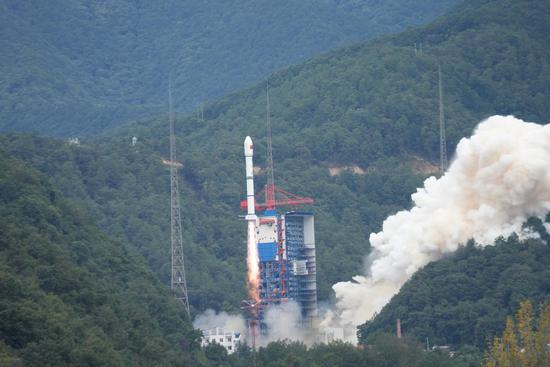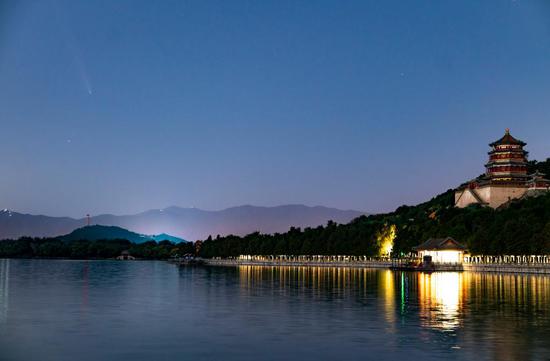
A photo taken on Feb 26, 2024, shows the tunnel boring machine Yongzhou at an industrial park of China Railway Construction Heavy Industry Corporation Limited in Changsha, Central China's Hunan province. (Photo/cnr.cn)
On Tuesday morning, construction of the world's longest undersea high-speed rail tunnel, the Jintang Undersea Tunnel of the Ningbo-Zhoushan Railway, transitioned from land-based to marine-based construction, officially embarking on its "journey under the sea".
At a depth of 42 meters underground on the Zhoushan side of the Jintang Undersea Tunnel, the "Dinghai" Shield Machine successfully crossed the seawall, moving from land to the sea for further tunneling.
"Successfully crossing the seawall means we have overcome all the land-based risk points. The next phase will fully shift to marine construction, which brings even greater challenges," said Yin Pengcheng, chief engineer of the Jintang Undersea Tunnel Project of the Ningbo-Zhoushan High-speed Railway of China Railway 11th Bureau.
The Jintang Undersea Tunnel lies beneath the Jintang Shipping Line, a major transportation route for the Ningbo-Zhoushan Port, which accommodates 100,000-ton vessels, in the East China Sea between Ningbo and Zhoushan. It begins in Beilun district, Ningbo, and ends in Jintang town, Zhoushan.
The total length of the tunnel is 16.18 kilometers, making it the longest high-speed rail undersea tunnel in the world. Of this, 11.21 kilometers will be constructed using the shield tunneling method.
On May 16, two shield machines, the "Dinghai" and the "Yongzhou", commenced work simultaneously from the Zhoushan and Ningbo sides, tunneling toward each other. The "Dinghai" is tunneling westward for a planned 6,270 meters, while the "Yongzhou" is tunneling eastward for 4,940 meters. Once the machines overcome the high water pressure and complex geological conditions, they will achieve a precise underwater connection.
"The successful crossing of the seawall by the tunneling machine confirms that our equipment selection was great. The machine has already successfully tunneled underneath highways, rivers, and seawalls in the land section, validating our choice and ensuring smooth progress," said Zhang Jintao, project director of the Jintang Undersea Tunnel Project of the Ningbo-Zhoushan High Speed Railway of China Railway 11th Bureau.
"Our tunneling machines are domestically developed, specifically designed for our geological conditions and construction environment. Now, as the machine reaches the sea as planned and eventually completes the tunnel, it will prove that our manufacturing technology is not only leading in China but also globally," Zhang said.
Currently, the "Dinghai" Shield Machine on the Zhoushan side is progressing at an average of 16 meters per day. The "Yongzhou" Shield Machine on the Ningbo side is expected to start marine construction in May of next year.
The Jintang Undersea Tunnel is expected to be fully completed by the end of 2026, and the Ningbo-Zhoushan Railway is projected to be operational by 2028.


















































 京公网安备 11010202009201号
京公网安备 11010202009201号